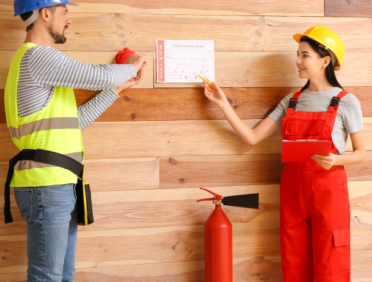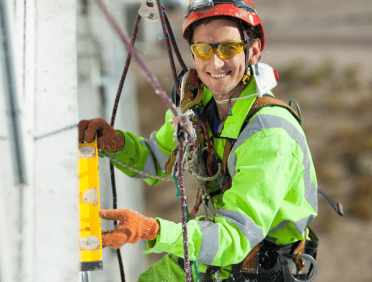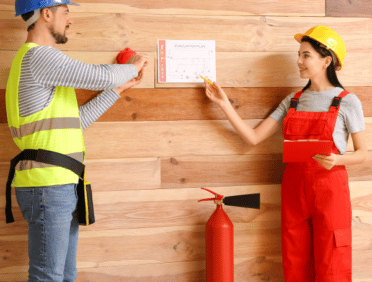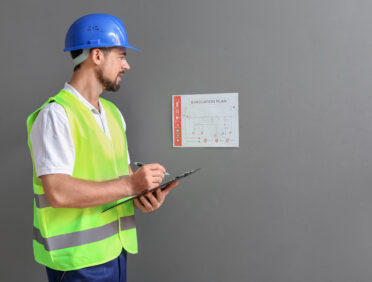When it comes to fire safety and the resultant risk assessments that come from it, it is important to get it right. This documentation has been created for the purpose of giving staff and employers full knowledge, training and understanding of what the fire safety risk assessment is, who is responsible for implementing it, what these people can do to design one, and how the fire safety risk assessment is an official responsibility with legal ramifications for an employer. At the end of the day, you have a legal duty to not only understand fire safety, but to enforce it.
Fire Safety Risk Assessment Guidance
When examining fire safety and the risk assessments needed to keep everyone in the workplace safe, do you know what needs to happen? Most employers don’t, which is concerning.
Yes, a lot of employers and managers could give you some basic, common-sense type ideas about what a fire safety risk assessment looks like, but most don’t know the full details. As you have a legal responsibility towards health and safety, it is pretty much vital that you get this one right. If you don’t, then you’re putting staff and your business at severe risk.
What is a Fire Risk Assessment?
When you conduct a fire risk assessment, you are taking a proper, organised, and methodical look at your business premises. You’re examining all the activities which take place on it, and the overall likelihood that people are going to be at risk of harm from working on these premises through a fire starting.
Your typical fire risk assessment is something that you need to carry out and is a legal requirement for you as a business owner. There’s more to it than just looking though, which you’ll come to discover as we cover each of the areas of the guidance in more detail.
Objectives of a Fire Risk Assessment
The fire risk assessment has a few different objectives. These are primarily outlined as follows:
- Identification. Fire risk assessments are interested in identifying areas where a fire, or the risk of a fire is likely.
- Reduction. A fire risk assessment is interested in making sure that the hazards within a workplace which can directly contribute to a fire are reduced to lower the risk of harm as much as possible.
- Arrangements. A fire risk assessment is tasked with managing the safety of the people within the workplace by identifying what types of physical fire precautions are necessary to ensure the long-term safety of the people on that premises.
The terms “hazard” and “risk” will be used frequently throughout the guide, so it is important to be able to know what they mean contextually and how they will influence the situation at hand.
A hazard is considered to be anything which has the potential to cause harm in a given situation.
A risk is considered to be the chance that a specific harm will occur.
If you are in an organisation which employs more than five people, or a licenced premise, then you are instructed by law to record all the details of a fire risk assessment, including taking proper notes as to what has been found during the assessment, what actions you’ll be taking to deal with the issue, and who is at risk as a result of the dangers present.
Companies who don’t meet this criteria do not have to technically keep a note of the fire risk assessment, but it is heavily recommended that you do so anyway, because this can make a big difference to your overall experiences.
The Dangerous Substances and Explosive Atmospheres Regulations 2002
The Dangerous Substances and Explosive Atmospheres Regulations 2002, known to many as DSEAR, are regulations that were created to help protect staff within the workplace if they interact with dangerous substances and explosive chemicals as part of their work.
Dangerous substances of most kinds can put people at risk from things like fire, explosive chemicals, and corrosion of metal in the workplace. The point of the DSEAR regulations is for the purpose of holding both the employers and self-employed (where applicable) to an accountable level of protecting the health and safety of their respective workplaces. They also have a responsibility towards members of the public who might be put at risk by these activities in the workplace.
Dangerous substances are considered to be any substance which is used in the work environment which could, if not properly controlled, cause harm to people. This could be the result of a fire, corrosion of metal or an explosion. These types of substances can be found in lots of places – paints, varnishes, solvents, flammable gases, dust, pressurised gases and many other places in the workplace.
The rules surrounding DSEAR state that every employer has a responsibility to know what types of dangerous substances are present within their workplace. They also need to know what the risks are for that workplace. Employers also have a responsibility to make sure that they properly implement control measures which have been designed specifically to reduce the risks which are present in the workplace or to control them.
Other responsibilities include putting proper controls in place to reduce the effects and impact of dangerous substances and their incidents, prepare plans and procedures designed to deal with these types of situations, and to make sure that staff get the training that they need to control and deal with any risks which might arise from these substances over time.
Who Needs a Fire Risk Assessment?
The truth about a fire risk assessment is that everybody needs to do one regardless of what business they run or even who they are. If you’re an employer who owns a business premises, even if it’s just you and one other worker, you need to do a fire risk assessment. You have a responsibility to protect staff from harm and thus means that you’ll need to subscribe to all of the latest health and safety rules and regulations.
How to do a Fire Risk Assessment
There are five steps to carrying out a fire risk assessment. Let’s take a look at each one.
Step #1 – Identifying Risk
The first step is the easy one – identifying people at risk. You can do this by thinking about the people who make up your company and the general public. Who are they? Why are they at risk?
Step #2 – Identifying Hazard
The second step is about identifying all of the potential fire hazards. You need to make sure that you have identified all the potential ignition sources and the sources of oxygen.
Step #3 – Evaluating and Dealing With Risk
The third step in the process is making sure that you evaluate the risks. This is a long one, so let’s take it one step at a time. You need to make sure that there are regular fire drills which take place, that staff are given proper training and instruction, and that you’ve taken some of the steps to reduce any sources that fuel and create a fire. You also need to make sure that you evaluate the full set of risks from a fire to both people and property. With regards to warnings, are the means of warning people something that can be clearly heard by everyone? Do you have an emergency fire plan in place? Looking at fire extinguishers, do you have enough in place, and are they visible to people through the use of clearly marked signs?
Looking at the means for fighting fires, you need to make sure that you’ve got both the right number and type of fire extinguishers. Your escape routes should be clearly marked out, and been created with proper health and safety in mind. All of your exit routes also need to track back to the right places and get people out quickly and safely.
Escape route lighting also needs to be considered, making sure that you have back-up power supplies, and that the lighting properly covers the space. When you think about signs, are they properly used to indicate escape routes and fire extinguishers? Are you making sure that you maintain all of the notices and signs to guarantee that they’re legible. Are you maintaining all the signs that have been provided for the sake of information for the fire and rescue services, such as those which indicate the storage of hazardous substances and the ones which suggest water suppression? Furthermore, do your notices give information on how to operate the security devices on your exit doors, and those which indicate that the doors enclosing your fire hazards need to be kept shut?
When it comes to tests and maintenance, are you doing regular checks on all the firefighting equipment? Do you also perform regular checks and maintenance of the fire detection and alarm systems? Furthermore, do you make sure to check all of the fire doors, escape routes, and associated signage?
If you have professionals who test and maintain the equipment for your property, are they properly trained to do so? Do you keep a log of all the testing and maintenance that you do?
Step #4 – Records
Recording all of your findings is an important part of your assessments. Are the records that you keep available for inspection at any time? Are you recording all of the significant information you find with the assessment?
Step #5 – Reviewing
Do you make sure to perform regular reviews of your fire safety risk assessment to make sure that the assessment is still valid? Alternatively, do you try and make sure that there hasn’t been a significant change on the premises that could substantially affect your fire safety measures?
Who Can Carry Out a Fire Risk Assessment?
When it comes to fire risk assessments, it is important to understand that as the owner of the business, you have a responsibility to carry out the fire risk assessment. However, there are other people who have the authority to carry out a fire risk assessment on the property. Your landlord can do so if they feel it is necessary, as can a representative from your insurance provider when they complete an assessment of your business for the purpose of awarding insurance claims.
Conducting a Fire Risk Assessment
Conducting a fire risk assessment is easy enough to do and requires you to explore a few simple steps that we already covered further up the guidance.
When completing a fire risk assessment, you are required to be objective and ruthless to make sure that the property complies with all the latest regulations. If you do not trust yourself to be objective when it comes to your fire risk assessments, you need to appoint someone with the relevant training to do so on your behalf.
Identifying Fire Hazards and Possible Sources of Ignition
Part of a robust fire risk assessment is to identify both fire hazards and possible sources of ignition. There needs to be ignition for a fire to break out – a chemical reaction or sudden exposure to an open flame are usually key indicators. Take a look at the way you do things and identify what the possible risk factors for ignition are. It’ll help you a lot in the long-run. You need to account for these sources and take proper corrective steps to control or reduce the risk they generate.
Recording of Fire Safety Risk Assessment Information
When it comes to fire safety risk assessment information, you should be recording the assessment and the consequent changes you implemented. Technically speaking, you are not required to do this if you have less than five employees.
However, it is recommended that you keep proper records regardless of business sizes. They help a lot when it comes to things like your business transparency, and also help with insurance claims in the event of an accident or emergency. Furthermore, if you expand, you can update a file instead of making it from scratch.
You need to produce a proper fire safety action plan and implement it where necessary. A fire safety action plan will outline what to do to enforce fire safety and make sure that all the rules are followed properly. This will outline things like evacuation procedures, escape routes, and what to do in the event a fire is spotted in the workplace. A fire safety action plan is a necessary part of any health and safety policy, after all. There are plenty of things to consider with a plan, so take the time to do it right.
You need to make sure that you have prepared your fire procedure and policies for the sake of proper record keeping and basic health and safety. These policies will outline your approach to fire risks, what you will do to prevent it, and how you’ll go about making sure that any and all parties that could be affected by fire (your workers, the general public, etc) are protected according to the laws that govern health and safety. This is a legal requirement to create so it needs to be done properly and safely.
Monitor and Review on a Regular Basis
As a business, you have a responsibility to make sure that you monitor and review your fire risk assessments and related documents on a regular basis to make sure that they are still accurate, applicable and useful. If you make any changes to the way the business operates, or an accident takes place, you need to make sure that you’ve taken the appropriate steps to re-examine the assessment to make sure that it is not at fault. Even if no accidents take place, you should review the policy on a regular basis, like every six months or so.
What Is the Penalty for Not Having a Fire Risk Assessment?
Businesses have a legal responsibility to carry out fire risk assessments. Those who do not do so could face unlimited fines and prosecution.
Learn Q provides full fire risk assessment training to help make sure that businesses are kept safe from harm and staff welfare is the top priority. We are more than happy to provide full and comprehensive training for any business that needs it. If you don’t want to handle your fire risk assessment duties, you need to appoint someone to receive training for you – we can help.
To download a .pdf of this blog, please click here












